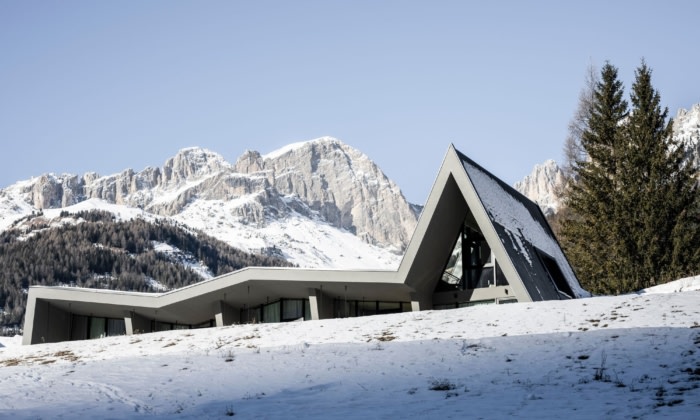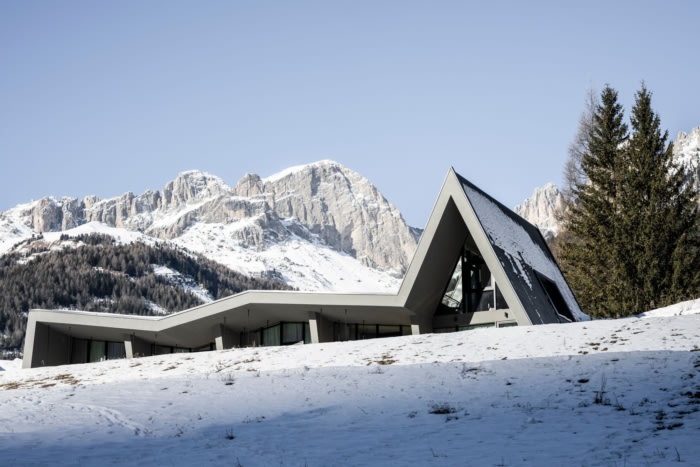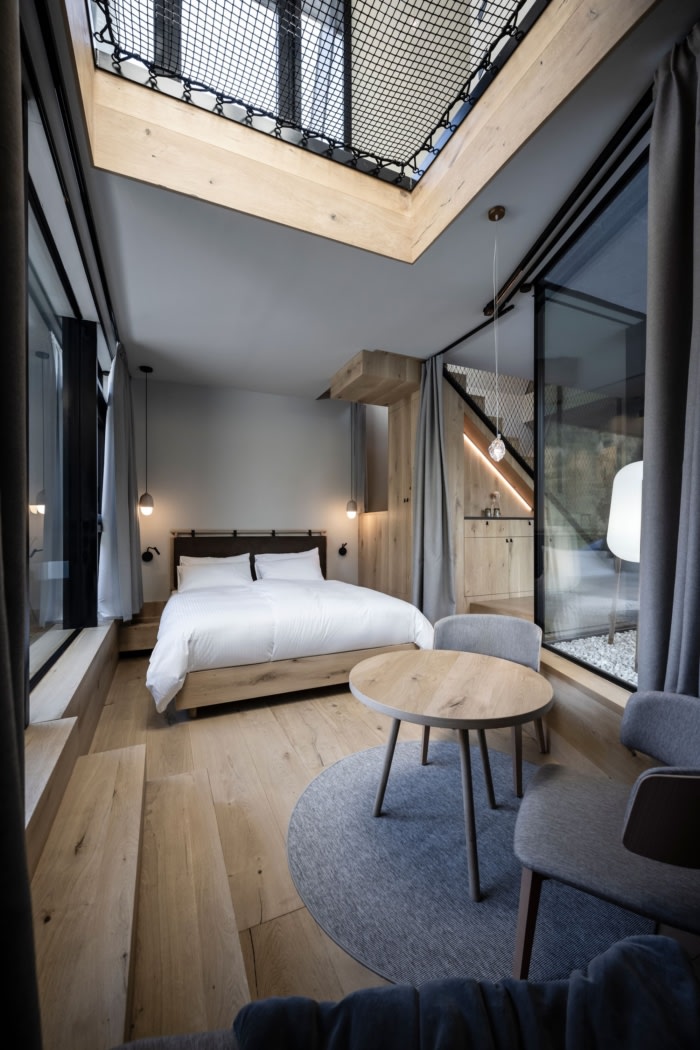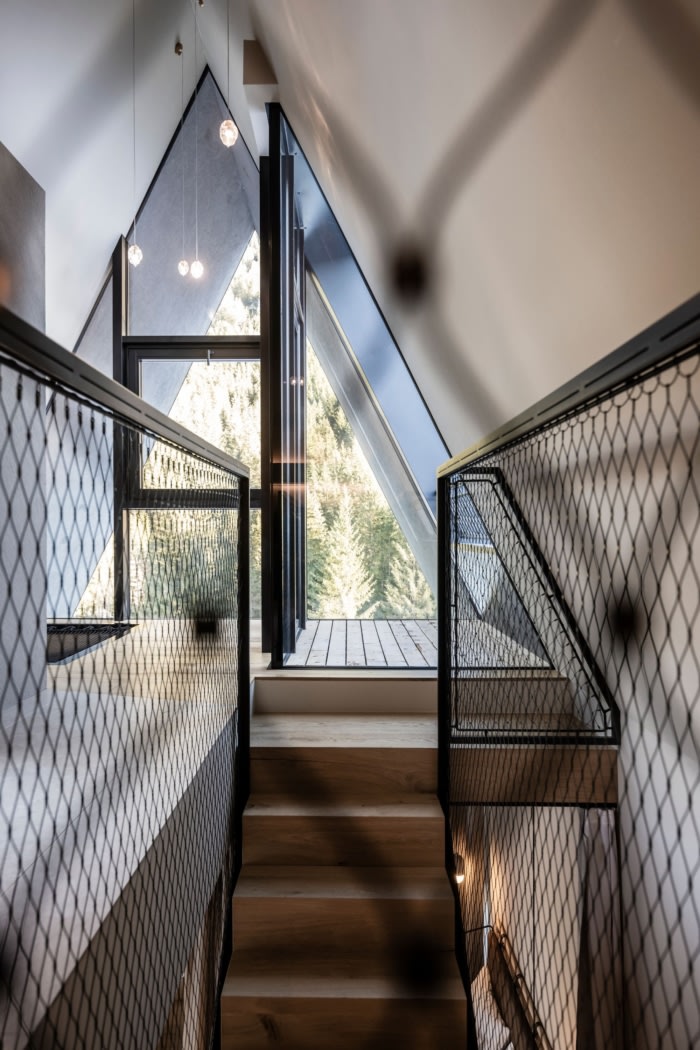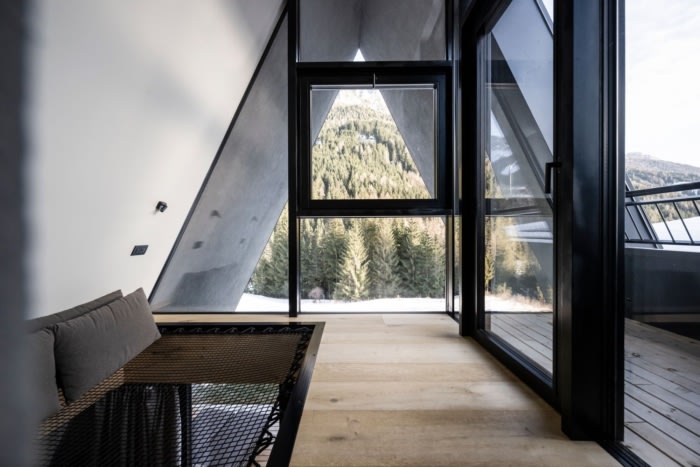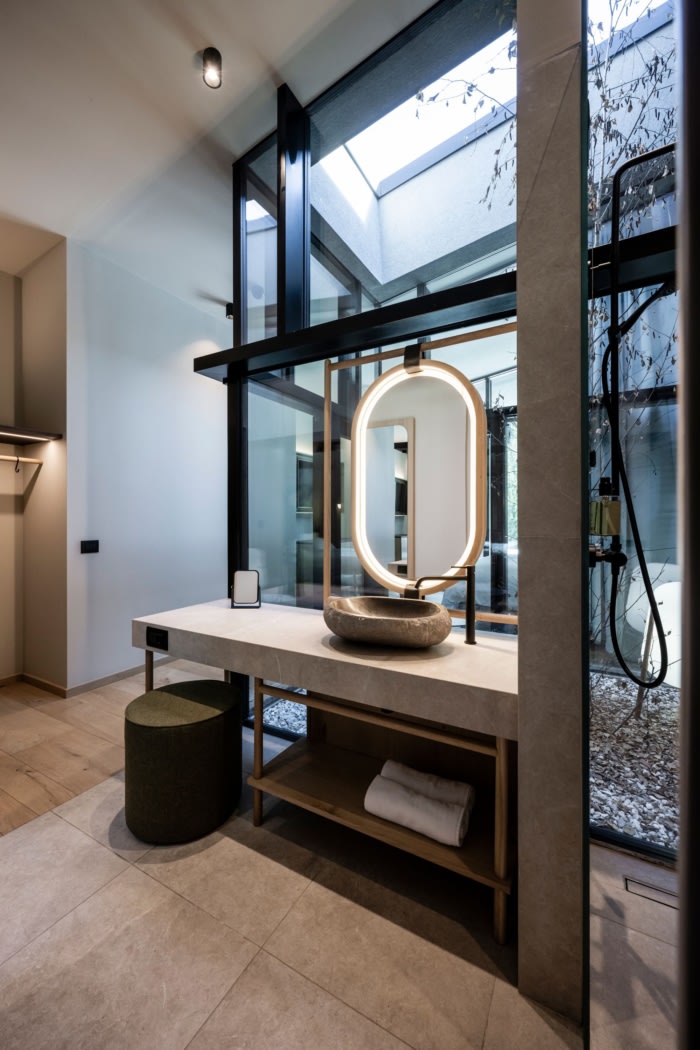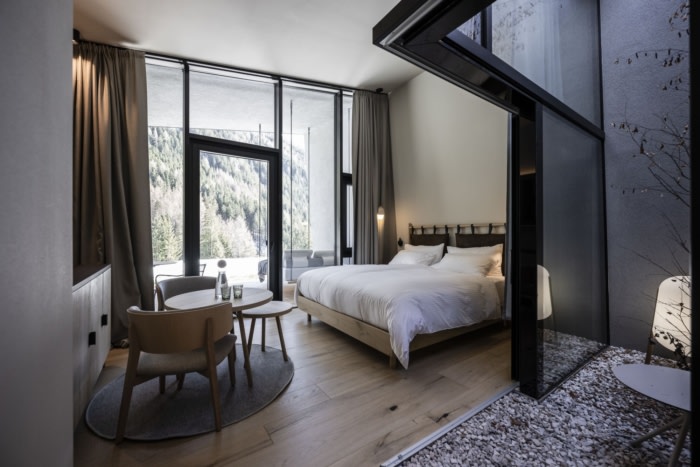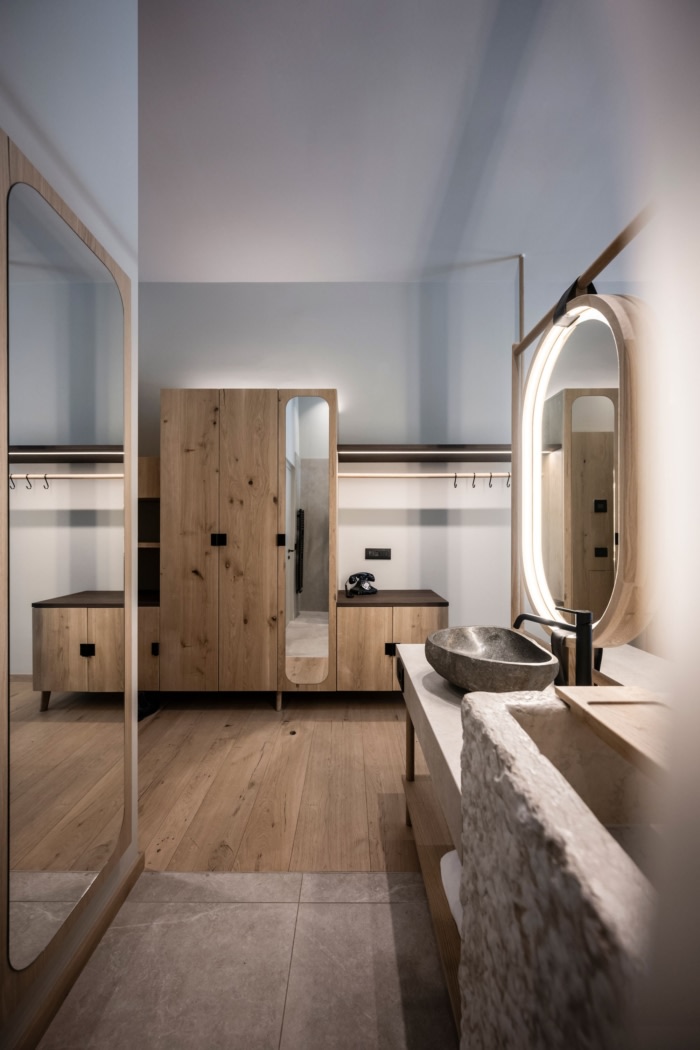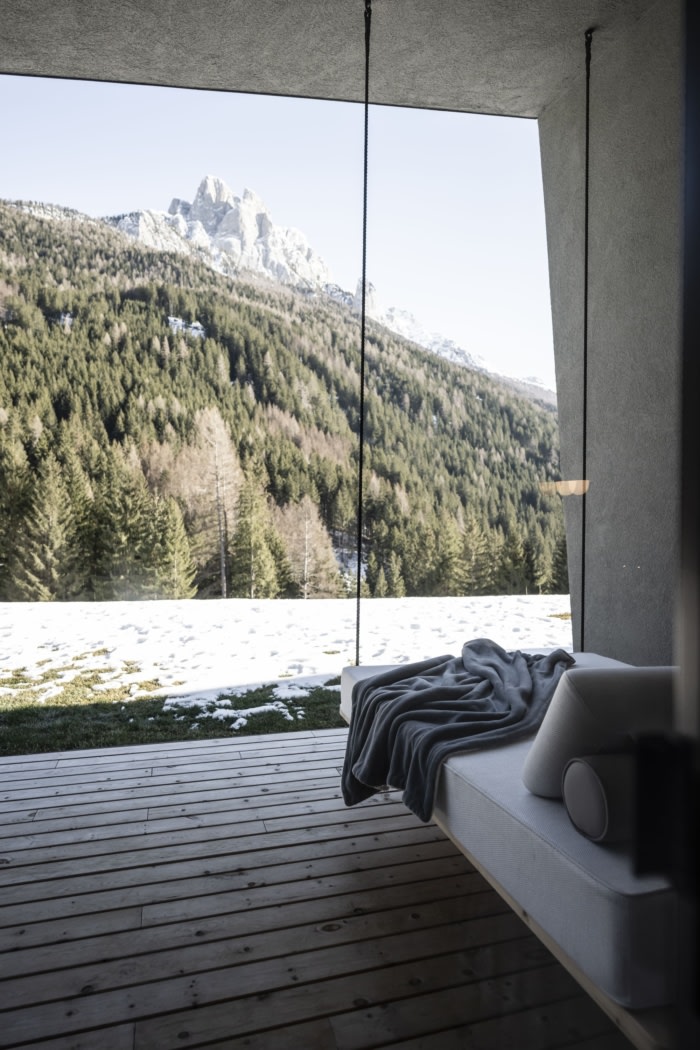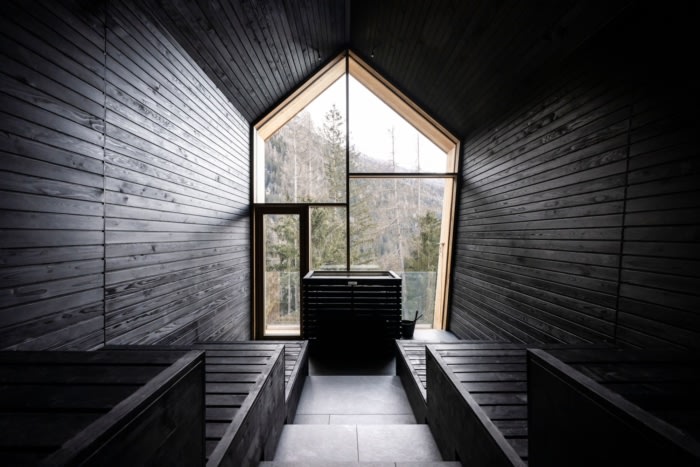Olympic Spa Hotel
NOA designed a sustainable extension for the Olympic Spa Hotel in Val di Fassa, integrating new rooms and a sauna into the surrounding landscape.
For the Olympic Spa Hotel in Val di Fassa, northern Italy, NOA designs a new extension according to a sustainable model, aiming to enhance and integrate the facilities with the surrounding landscape. From the new rooms nestled in the Alpine meadow, with terraces and internal patios, to the surprising sauna overlooking the forest, to be reached by an aerial path, this project camouflages the new, plays with the profile of the mountains and gives guests the emotion of a sincere bond with nature.
Adding new spaces and functions to a mountain hotel without affecting the harmony with the landscape, on the contrary, creating a better integration with the surroundings: this is the guiding theme of the project realised by NOA for the Olympic Spa Hotel, in Vigo di Fassa, with a tradition of hospitality dating back to 1963. The plan to expand the current premises with an annex and a new sauna was an opportunity to define a ‘mimetic’ and sustainable intervention model, which will allow the hotel to grow and offer its guests an even more exciting immersion in the beautiful Dolomite scenery.
The key idea in NOA’s design was to shift the centre of gravity of the hotel from the provincial road, which most of the rooms hitherto overlooked, to the slope behind it, which slowly declines, turning into a forest, until it reaches the Avisio stream. Thus, the project envisaged the construction of the new ten rooms along the slope, partially buried and connected to the hotel by an underground passage. The sauna, on the other hand, is a separate wooden building, located on the edge of the forest, in an elevated position facing the treetops and accessible via an atmospheric aerial pathway. The emphasis is on direct contact with nature, which is also supported by the used materials, by the façade design that plays with the mountain skyline, by the terraces and the special interior patios embedded in the larger rooms.
The New Rooms
The new building, which accommodates ten rooms and a gym, is characterised by its distinctive profile, inspired by that of a mountain. At one end, a higher spike identifies the double level of the largest suite, then the roof descends, with lower height spikes indicating the single-level rooms and, at the other end, the fitness studio. This silhouette, highly recognisable in its graphic simplicity, is intended to become the hotel’s architectural signature.
Even the colour palette of the materials used recalls the surrounding landscape: the sloping pitches and external walls are plastered in a grey colour reminiscent of the Dolomite rocks. It is an intervention that can be defined as m imetic, due to the use of forms and materials in symbiosis with the landscape, and at the same time carried out with sustainable thinking: both because the entire project was implemented with local firms, and because the partial burial of the structure is designed to limit the volumes as much as possible.
In Touch with Nature
In the extension, the burying of part of the volume offers guests the feeling of closer contact with nature. Access from the hotel to the annex is also via an underground path.
Each room has floor-to-ceiling windows and a large terrace overlooking the landscape. The new rooms are named in the Ladin language, a culture to which the owners’ family is very attached. Thus, the four ‘Te Bosch’ rooms pay homage to the forest, an inspirational element that shapes the interior. Each of them has an internal patio with transparent walls: a private space accessible in every season, bringing light and nature into the room. The vegetation of the patio, the presence of a birch tree and the view of the sky become part of a new experience for hotel guests who can, for example, imagine themselves outdoors while taking a shower. Or, in winter, they can see snow falling from both sides of the room, with the feeling of being in the middle of an alpine forest. Or, again, they can sleep outside on summer nights, on suspended beds equipped with double sleeping bags, and admire the starry sky, given the lack of light pollution.
In the five ‘Te Aga’ rooms, dedicated to the element of water, there is a stone fountain from which pure mountain water from a spring at 3,5000 metres gushes out. A benefit that the hotel offers with the aim of banning the use of plastic bottles. Oak and larch from the Fassa Valley are used in all the rooms, both for the floor and the furnishings.
At one end of the building, at the highest ‘peak’ of the façade, is the two-level suite. The sleeping area is on the ground floor, in an area lowered by three steps to create more intimacy and give movement to the volume of the room. The first floor, on the other hand, is entirely dedicated to relaxation: the sauna, emotional shower and wellness area make use of the volume of the characteristic double-pitched attic, looking out over the forest.

